That's Amore! Ten Nonfiction Books (for Adults) To Fall In Love With

Illustration by Lars Leetaru
Thanks to Mark Rotella’s Amore: The Story of Italian American Song (see p. 34), Harry Warren’s 1952 “That’s Amore,” made famous by Dean Martin, is ringing in my head. Except I can’t help singing a library version of the lyrics: “When you see a new book by a favorite scribe—that’s amore! When those covers just shine like a glass of great wine—that’s amore!… When you walk down those stacks in a dream but you know you’re not dreaming signore…Scuzza me, but you see, that in my library—that’s amore!”
It is no secret that I am passionate about reading, so connecting amore to books isn’t that much of a stretch. And I especially love nonfiction books. It seems like my whole reading life I have invariably reached for biographies, science and technology tomes, social histories, memoirs, music, cookery books, and even books about well…reading books. This year I found some intoxicating reads to love—each terrific and worthy of introducing to you. Here are the ten books I fell the hardest for. Pick them up, dive on in, then share with colleagues, friends, and family. Celebrate our love of reading! That’s amore!
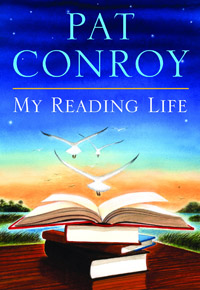 Conroy, Pat. My Reading Life. Drawings by Wendell Minor. Nan A. Talese (Doubleday/Random), 352 pages. ISBN: 978-0-385-53357-7. $25.
Conroy, Pat. My Reading Life. Drawings by Wendell Minor. Nan A. Talese (Doubleday/Random), 352 pages. ISBN: 978-0-385-53357-7. $25.
Pat Conroy, the author of such popular and powerful novels as The Great Santini and The Prince of Tides offers a memoir through books. He begins with his mother, Peg Conroy, whom he credits with kindling his love of books, then goes on to muse about the most significant books he’s read while introducing us to the memorable people he associates with each title. Particularly affecting portraits include Gene Norris, perhaps the most supportive English teacher of all time; Conroy’s longtime friend Cliff Graubart, the owner of Atlanta’s Old New York Bookshop; and his mentor, poet and novelist James Dickey. Along the way Conroy offers up a terrific essay on the almost totemic meanings that Mitchell’s Gone with the Wind holds for the postwar South; a cautionary portrait of a cantankerous, order-obsessed high school librarian; and wonderful appreciation of Norman Berg, a legendary book rep who schooled a sometimes clueless young writer in the intricacies of the publishing industry, the art of relationship building, and the secret of the “hand-sell.” This is a lovely little gem with handsome jacket art and interior drawings. Conroy reminds readers that the truly best books offer “the full measure of a writer’s heart.”
 Demick, Barbara. Nothing to Envy: Ordinary Lives in North Korea. Spiegel & Grau (Random), 2009. 336 pages. ISBN: 978-0-385-52390-5. $26.
Demick, Barbara. Nothing to Envy: Ordinary Lives in North Korea. Spiegel & Grau (Random), 2009. 336 pages. ISBN: 978-0-385-52390-5. $26.
Recent reports from North Korea make clear that the nation’s commitment to nuclear weapons is increasing, along with its belligerent attitude toward the West. Demick, the Los Angeles Times’s Beijing Bureau Chief, spent years researching this book, and through gripping details she introduces us to six recent refugees from the world’s most repressive regime: star-crossed lovers, a woman physician who struggled to heal her patients, a street-smart kid who lived by his wits, a mother who loved the godlike Great Leader, and her older daughter who chafed at the restrictions within the supposedly classless society. North Korea is a shockingly Orwellian place: information is controlled, behaviors and motives are scrutinized, and prison and work camps are ubiquitous. In the 1990s, one in ten North Koreans died from widespread famine. Today, life for most of the 23 million North Koreans is one of repressed desperation. Days are spent foraging for food. No one with a government job is paid. Soviet-era machinery and vehicles are in disrepair. A propaganda machine reminiscent of the Maoist Cultural Revolution fans anti-Capitalist zeal. All the while, North Korea’s energies are focused on its enemies—especially the United States. Must we focus more attention on this “grim dysfunctional country?” The answer is clear.
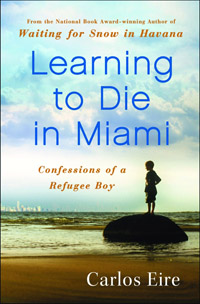 Eire, Carlos. Learning to Die in Miami: Confessions of a Refugee Boy. Free Press (S & S), 320 pages. ISBN: 978-1-4391-8190-4. $26.00. Miami y Mis Mil Muertes: Confesiones de un cubanito desterrado. Free Press. ISBN: 978-1-4391-9172-9. $16. Paper.
Eire, Carlos. Learning to Die in Miami: Confessions of a Refugee Boy. Free Press (S & S), 320 pages. ISBN: 978-1-4391-8190-4. $26.00. Miami y Mis Mil Muertes: Confesiones de un cubanito desterrado. Free Press. ISBN: 978-1-4391-9172-9. $16. Paper.
Over 14,000 unaccompanied Cuban refugee children arrived in the United States via 1962’s Operation Pedro Pan. This is the story of two brothers, Carlos and Tony, and how they managed to survive those first brutal years of exile, strangers in an even stranger land. Eire has penned a worthy companion to his National Book Award winner, Waiting for Snow in Havana: Confessions of a Cuban Boy . In America, even something as essential as his birth-given name is subject to change. Eager for acceptance, Carlos becomes Charles then Chuck then Charlie, until finally Carlos is reborn. For Eire, the past is confounding: “I’m obsessed with time, and above all with the way in which all that we can really own is the past, what once was, but no longer is.” Eire writes prose like a poet; the words tumble, stumble, flow, and finally soar. Finally though, Eire reaches an epiphany about his relationship with America: “I don’t have to be a refugee or an exile who happens to speak without an accent. I can own the accent and the language, and let it own me. I can sell my soul to it.”
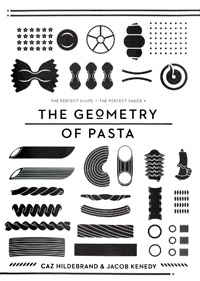 Kennedy, Jacob. The Perfect Shape + the Perfect Sauce = The Geometry of Pasta. Black and white illustrations by Caz Hildebrand. Quirk Books, 2010, 228 pages. ISBN 978-159474-495-2. $24.95.
Kennedy, Jacob. The Perfect Shape + the Perfect Sauce = The Geometry of Pasta. Black and white illustrations by Caz Hildebrand. Quirk Books, 2010, 228 pages. ISBN 978-159474-495-2. $24.95.
Confounded by all the shapes and names of pasta? Do the shape and size really matter? Two Brits, Jacob Kennedy, the chef and owner of London’s acclaimed Bocca di Lupo restaurant, and Caz Hildebrand, designer of many of Nigella Lawson’s popular cookbooks, come together to “sort it all out.” The simple A to Z arrangement, with its bold black-and-white design, is a snap to navigate. It is wonderfully inclusive, too. The book contains over 100 easy-to-decode recipes adopted for U.S. kitchens, with generous information on favorite sauces. But pasta is the star here: “The properties of each dough, the mechanics of each shape, and the tastes and traditions of each region.” It’s all surprisingly complex, as different pastas really do have a discrete taste and “mouth feel,” and each pasta interacts differently with each sauce. “From region to region, the same pasta is cooked with a different sauce…From door to door.…each cook [is] convinced their method is the best, the only correct way.” Now that’s Italian!
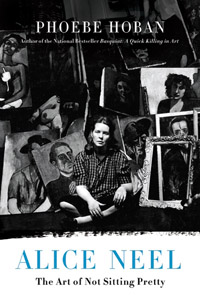 Hoban, Phoebe. Alice Neel: The Art of Not Sitting Pretty. St. Martin’s Press, 2010. 512 pages. ISBN 978-0-312-60748-7. $35.
Hoban, Phoebe. Alice Neel: The Art of Not Sitting Pretty. St. Martin’s Press, 2010. 512 pages. ISBN 978-0-312-60748-7. $35.
Neel’s remarkable, expressionistic portraits are unique in postwar American art. Her subjects are decidedly un-pretty: gritty, often devastatingly depressing and disturbingly self revelatory. This study of her tumultuous life—bohemian, avowed Communist, and unofficial portraitist to Beats and Pop artists alike—spans much of the 20th century. Unconventional and self-directed, Neel transcended her arts academy training, bouts of depression, the loss of two of her children (one by death, another by divorce), and financial difficulties to become the person she wanted to be: a full-time, serious painter. Hoban, author of the impressive Basquiat: A Quick Killing in Art, reveals the life of this sometimes opportunistic and often downright unlikable painter. A great introduction for the uninitiated while also solidifying Neel’s reputation.
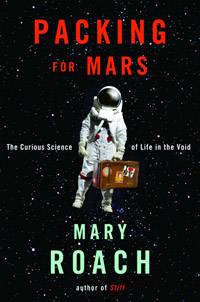 Roach, Mary. Packing for Mars: The Curious Science of Life in the Void. W.W. Norton, 2010. 224 pages. ISBN: 978-0-393-06847-4. $25.95.
Roach, Mary. Packing for Mars: The Curious Science of Life in the Void. W.W. Norton, 2010. 224 pages. ISBN: 978-0-393-06847-4. $25.95.
Exploring the gross realities of life and science are Mary’s Roach’s métier. The author of Stiff: The Curious Lives of Human Cadavers and Bonk: The Curious Coupling of Science and Sex, Roach never flinches from doing what it takes to get the facts, and her reporting from the unglamorous frontlines of space exploration is frank, detail-rich, and often very funny. Did you know that space walking is dangerous but so intensely exhilarating that many don’t really want to come back inside? Or that “staying regular” in outer-space has its special challenges, that effective toileting needs its own accoutrements (diapers are not just for babies anymore!), or that chewing and swallowing in Zero-G present mortal dangers? Today’s space-heroes-to-be spend hours in mission simulations; they confront vertigo, nausea, muscle atrophy, claustrophobia, and boredom. In “The Three Dolphin Club: Mating in Space,” she deadpans seemingly infinite challenges that attend sexual congress in the outer limits: “thrusting just pushes the object of one’s affections away.” Though Roach delicately sidesteps advocating for further space exploration, she catalogs the countless benefits that we earthlings have gained from space travel. Should we go to Mars? For Roach the answer is a resounding yes!
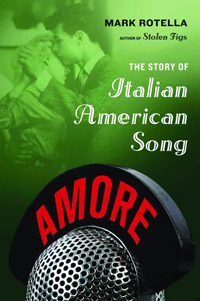 Rotella, Mark. Amore: The Story of Italian American Song. Farrar, Straus, Giroux (Macmillan), 2010. 320 pages. ISBN: 978-0-86547-698-1. $26.
Rotella, Mark. Amore: The Story of Italian American Song. Farrar, Straus, Giroux (Macmillan), 2010. 320 pages. ISBN: 978-0-86547-698-1. $26.
Rotella (Stolen Figs and Other Adventures in Calabria), a Publishers Weekly editor and first generation Italian American, chronicles his reawakened affection for late-20th-century Italian American “roots music.” What’s so special about the Italian American song? Rotella credits “a distinctive Italian American style—cocky and tender, tough and vulnerable, serious and playful, forward-thinking and nostalgic.” In the chapter “The Old Country,” Rotella introduces early icons like Enrico Caruso, the influential big band vocalist Russ Columbo, Frank Sinatra, and the swingin’, New Orleans-born jazz great Louis Prima (the voice of King Louis in Disney’s Jungle Book). After the Second World War, Italian Americans and their distinctive sound dominated pop: Perry Como, Vic Damone, Frankie Laine, Mario Lanza, Al Martino, Tony Bennett, Connie Francis, Lou Christie, Bobby Darin, Dion and The Belmonts, Johnny Maestro and the Crests, and even Elvis (whose hit “It’s Now or Never” is actually an English-language cover of the Neapolitan standard “O Sole Mio”). Italian crooners went on to help create the idea of Vegas as the adult destination, fueled by the forever cool of the Rat Pack. Today? Sinatra has his own satellite radio station: Siriusly Sinatra, and 84-year-old Bennett sang “God Bless America” in the recent World Series. It’s official: Italian Pop is here to stay!
 Skloot, Rebecca. The Immortal Life of Henrietta Lacks. Crown (Random), 384 pages. ISBN: 978-1-4000-5217-2. $26.
Skloot, Rebecca. The Immortal Life of Henrietta Lacks. Crown (Random), 384 pages. ISBN: 978-1-4000-5217-2. $26.
A n essential component of biomedical research, Skloot finally gives the HeLa cell line its human face. HeLa grew from a tissue sample taken from a highly aggressive cancerous tumor on the cervix of 31-year-old Henrietta Lacks, a young, African-American mother, the child of tobacco farmers, and the granddaughter of slaves, who died a painful death in the colored ward of Johns Hopkins Hospital in 1951. She never gave permission for the sample to be taken; in turn, her cells have reproduced geometrically and scientists estimate that over 50 million metric tons of cells—as much as one hundred Empire State Buildings—have been grown since 1951. Skloot (a regular contributor to Popular Science ) offers a detailed and dramatic medical detective story, effectively balancing careful, scientific reporting with intense and respectful interactions with Lacks’s extended family. The brutal irony of Lacks’s life is that though her early death did not allow her to mother her own children, her cells and the medical miracles they engendered (polio vaccines, DNA research, and more) effectively mothered us all.
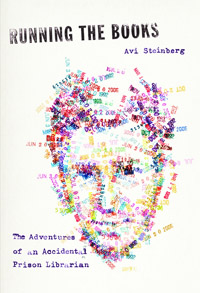 Steinberg, Avi. Running the Books: The Adventures of an Accidental Prison Librarian. Nan A. Talese (Doubleday/Random), 416 pages. ISBN: 978-0-385-52909-9. $26.
Steinberg, Avi. Running the Books: The Adventures of an Accidental Prison Librarian. Nan A. Talese (Doubleday/Random), 416 pages. ISBN: 978-0-385-52909-9. $26.
How did a freelance obituary writer for the Boston Globe , a former Yeshiva bocher (young Torah scholar), and a Harvard grad, end up working as a creative-writing teacher and part-time library assistant at “the Bay,” Boston’s Suffolk County House of Correction? Steinberg writes that w hen pondering the choice between law school and working “inside,” he opted for the union gig—prison. The opportunity let him embrace his somewhat quixotic dream: of being a book-slinger with a badge: part bookworm, part badass. Note that this isn’t a how-to book for prison librarians. But it will validate the reasons most of us became librarians—the impulse to seek and share information, to support learning, to build and sustain communities. And while most of us are vexed by the shusher stereotype (and most public and school libraries can be anything but quiet), it turns out that in prison, silence can be sustaining. Some prisoners even try to get into solitary confinement to escape from the noise and the hell that is other people (apologies to John-Paul Sartre). Few folks in this book are, well, admirable (they are all felons after all). But they are certainly memorable. And one can’t help but be touched by their need for hope that transcends the sense of loss and the ever-present evidence of deep, often irreparable, failure. An affecting and valuable read.
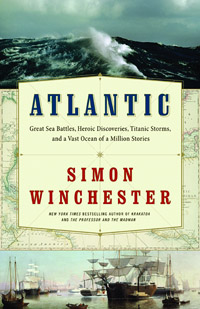 Winchester, Simon. Atlantic: Great Sea Battles, Heroic Discoveries, Titanic Storms, and a Vast Ocean of a Million Stories. Harper (HarperCollins), 512 pages. ISBN: 978-0-06-170258-7. $27.99.
Winchester, Simon. Atlantic: Great Sea Battles, Heroic Discoveries, Titanic Storms, and a Vast Ocean of a Million Stories. Harper (HarperCollins), 512 pages. ISBN: 978-0-06-170258-7. $27.99.
Winchester, the skilled writer of such wonderfully engaging books as The Map That Changed the World and Krakatoa, captures the reader in this biography of one of the world’s greatest oceans. To organize such a vast history, Winchester adapts the memorable “Seven Stages of Man” speech (“All the world’s a stage…”) from Shakespeare’s As You Like It, so each of the seven chapters roughly aligns to an age of the Atlantic, from infancy, childhood, lover, soldier, and justice to old age and death (projected to be at 370 million years). A “furiously and demonstrably living” sea, the Atlantic covers about 33 million square miles and is home to a seemingly infinite variety of flora and fauna. So much is contained in this book: geology, oceanography, tales of discovery and exploration, the Napoleonic wars, piracy, the slave trade, whaling, the great age of Yankee clippers, the sinking of the Titanic, U-boats, undersea exploration, fish ecology, oils spills, global warming, and so much more. Readers will relish how Winchester masters the pitch and roll of fact, makes cogent connections, and uses digressions to add color and vitality. A grand yarn by a nonfiction master.
Barbara Genco (bgenco@mediasourceinc.com) is Library Journal’s collection management editor.
RELATED
The job outlook in 2030: Librarians will be in demand
The job outlook in 2030: Librarians will be in demand
ALREADY A SUBSCRIBER? LOG IN
We are currently offering this content for free. Sign up now to activate your personal profile, where you can save articles for future viewing






Add Comment :-
Be the first reader to comment.
Comment Policy:
Comment should not be empty !!!